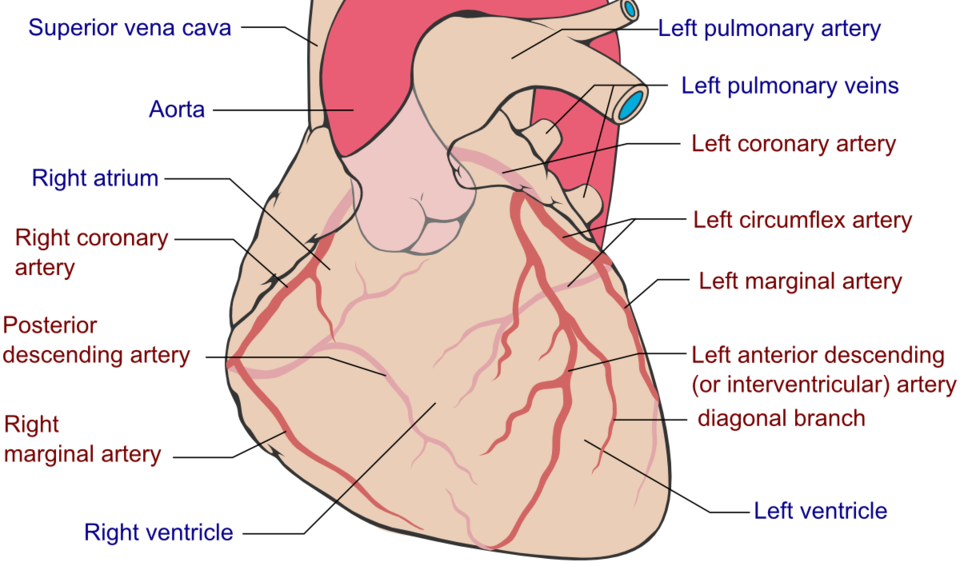Cardiology > Peripheral Vascular Disease
Peripheral Vascular Disease
Background
Peripheral vascular disease (PVD) refers to a spectrum of disorders involving obstruction or dysfunction of peripheral arteries, most commonly due to atherosclerosis. It primarily affects the lower extremities and leads to reduced blood flow, resulting in symptoms such as intermittent claudication and critical limb ischemia. If untreated, it can lead to ulceration, gangrene, and limb loss.
II) Classification/Types
By Etiology:
- Atherosclerotic (most common): Chronic arterial narrowing due to plaque formation.
- Thromboembolic: Acute arterial occlusion from an embolus or thrombus.
- Inflammatory: Vasculitides such as Buerger disease or Takayasu arteritis.
- Fibromuscular dysplasia: Non-atherosclerotic arterial narrowing, especially in young females.
By Clinical Severity:
- Asymptomatic: Documented disease without symptoms.
- Intermittent Claudication: Reproducible leg pain with exertion relieved by rest.
- Critical Limb Ischemia (CLI): Rest pain, non-healing ulcers, or gangrene.
- Acute Limb Ischemia: Sudden onset of limb pain, pallor, and pulselessness.
III) Pathophysiology
Progressive arterial narrowing from atherosclerosis leads to reduced perfusion. Initially, collateral vessels compensate, but over time, tissue hypoxia occurs, causing muscle fatigue and pain. Advanced disease leads to ischemic rest pain and tissue necrosis.
IV) Epidemiology
- Sex: Slight male predominance.
- Age: Incidence increases sharply after age 50.
- Geography: Higher prevalence in Western countries due to lifestyle factors.
- Comorbidities: Frequently associated with coronary artery disease, diabetes, hypertension, and smoking.
Etiology
I) What Causes It
- Atherosclerosis (primary cause)
- Arterial thrombosis or embolism
- Vasculitis (e.g., Buerger disease, Takayasu arteritis)
- Trauma to vessels
Iatrogenic (e.g., post-angiography or surgery)
II) Risk Factors
- Smoking (most significant modifiable risk factor)
- Diabetes mellitus
- Hypertension
- Hyperlipidemia
- Age >50 years
- Male sex
- Chronic kidney disease
- Sedentary lifestyle
Clinical Presentation
I) History (Symptoms)
- Intermittent claudication: Cramping pain in calves, thighs, or buttocks with walking
- Rest pain (advanced disease): Typically at night, relieved by hanging leg off bed
- Non-healing wounds or ulcers on toes or feet
- Cool, pale extremities
Erectile dysfunction (Leriche syndrome)
II) Physical Exam (Signs)
Vital Signs:
- May show hypertension or signs of systemic atherosclerosis
Peripheral Vascular Exam:
- Absent or diminished distal pulses
- Cool extremity
- Skin: Hair loss, shiny skin, thickened nails
- Bruits over femoral or popliteal arteries
- Dependent rubor; pallor on elevation
- Ulcers: Typically dry and located on toes or pressure points
Differential Diagnosis (DDx)
- Lumbar spinal stenosis (neurogenic claudication)
- Chronic venous insufficiency
- Diabetic neuropathy
- Popliteal artery entrapment
- Deep vein thrombosis (acute pain/swelling)
- Raynaud phenomenon (episodic cold-induced ischemia)
- Vasculitis syndromes
Diagnostic Tests
Initial Tests:
Ankle-Brachial Index (ABI):
- First-line screening tool
- ABI <0.90 confirms PVD; <0.40 suggests critical limb ischemia
Duplex Ultrasonography:
- Identifies location and severity of arterial stenosis
Other Imaging:
- CT Angiography or MR Angiography: Detailed vascular anatomy for surgical planning
- Conventional Angiography: Gold standard, also used for endovascular interventions
Additional Labs:
- Lipid profile
- Hemoglobin A1c
- Renal function
- CBC and inflammatory markers (if vasculitis suspected)
Treatment
I) Medical Management:
Lifestyle Modification:
- Smoking cessation (most effective intervention)
- Exercise therapy: Supervised walking program
- Glycemic control in diabetics
- Blood pressure and lipid control
Pharmacotherapy:
- Antiplatelets: Aspirin or clopidogrel
- Statins: For lipid lowering and plaque stabilization
- Cilostazol: Improves claudication symptoms (contraindicated in heart failure)
- Antihypertensives: ACE inhibitors preferred
Wound Care:
- For ulcers, multidisciplinary approach including podiatry
II) Interventional/Surgical:
Endovascular:
- Angioplasty with or without stenting (preferred for focal disease)
Surgical:
- Bypass grafting for extensive or complex lesions
- Amputation for non-salvageable limbs
Thrombolysis/Thrombectomy:
- For acute limb ischemia
Patient Education, Screening, Vaccines
- Importance of smoking cessation and exercise
- Daily foot inspection, especially in diabetics
- Foot hygiene and protective footwear
- Avoid exposure to extreme cold or trauma
- Adherence to medication regimen and follow-up
Vaccinations:
- Influenza annually
- Pneumococcal vaccine
- COVID-19 vaccination
Consults
- Vascular Surgery: For revascularization or bypass
- Cardiology: Given frequent coexisting coronary artery disease
- Endocrinology: For diabetes management
- Wound Care Team/Podiatry: For foot ulcers
- Nephrology: In patients with CKD-related calcific PVD
- Primary Care/Internal Medicine: For risk factor modification
Follow-Up
- Regular ABI measurement (every 6–12 months)
- Foot exams at each visit
- Monitor for new or worsening symptoms (pain, ulcers, color changes)
- Adjust therapy based on symptoms and disease progression
- Reinforce lifestyle changes at every encounter
Recommended
- Aortic Aneurysm
- Aortic Dissection
- Aortoiliac Disease
- Carotid Artery Dissection
- Vertebral Artery Dissection
- Giant Cell Arteritis
- Takayasu Arteritis
- Peripheral Arterial Disease
- Acute Limb Ischemia
- Arteriovenous Fistula
- Intermittent Claudication
- Hypertensive Vascular Disease
- Thromboangiitis Obliterans
- Deep Venous Thrombosis (DVT)
- Venous Thromboembolism
- Thrombophlebitis
- Varicose Veins
- Chronic Venous Insufficiency
- Stasis Ulcers
- Statis Dermatitis

Stay on top of medicine. Get connected. Crush the boards.
HMD is a beacon of medical education, committed to forging a global network of physicians, medical students, and allied healthcare professionals.
